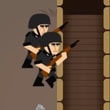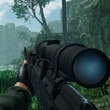Theres a murderer loose terrorifo called Slender. Do not
🌘 Footsteps, fog, and the feeling you’re already too late
The forest does not welcome you; it tolerates you. Your flashlight slices a thin cone through mist and treetops lean like tall listeners. In Slender, the rules are simple enough to fit in your pocket—find the pages and leave—but the feeling is big and heavy and sits in your chest like a held breath. You come for an objective and stay for dread, one careful step at a time, because the quiet is loud and the wrong turn feels personal.
🔦 Flashlight etiquette and how darkness negotiates
The beam is both lifeline and liability. Keep it on and you can read the world—graffiti on concrete, notes stapled to splintered boards, the shrug of a rusted fence at the edge of nowhere. Leave it on too long and battery drain turns certainty into smudges. Flick it off and sound grows teeth; switch it back on and the trees seem closer, as if they moved while you blinked. You learn to pulse the light: short bursts to confirm a path, longer sweeps before entering tight spaces, quick dips when your nerves start writing fan fiction.
📄 Why the pages matter more than paper
Each page is a small contract with the night. “Don’t Look…,” “Can’t Run,” simple scrawls that read like advice and threats at once. Picking one up doesn’t just tally progress; it changes the music under your skin. The static creeps a little earlier, the air narrows, and the feeling of being watched graduates to a certainty you can’t afford to confirm. The later pages live in worse places—inside echoing bathrooms, beyond blind corners, half-hidden on truck trailers—so your route planning becomes equal parts courage and cartography.
🖤 Presence without footsteps
Slender doesn’t sprint, doesn’t rant, doesn’t even walk like a person who believes in floors. He exists, then he exists closer. Look too long and your vision fractures into snow; look away too late and the world decides to stop including you. The enemy is a camera trick with bad manners, a geometry problem that refuses to be solved by staring. You win by navigating, not by fighting, by treating line-of-sight like a live wire you step over delicately.
🗺️ The map that rearranges your confidence
There’s a bathroom block that hates angles, a tunnel that echoes like a dare, a fenced yard with a tank you will circle more times than you’ll admit, a scattering of landmarks that feel friendly from a distance and predatory up close. The forest is a repeating texture until it isn’t, until a distinctive tree or a trunk pile tells you which way you’ve already been and which way might still forgive you. You start leaving breadcrumb memories: a path of crushed grass, a fence bend that points toward a yard, the way the air seems to thin near the truck. Navigation becomes an act of storytelling you tell yourself to stay brave.
📻 Sound that replaces jump scares with inevitability
There’s music, yes, but it mostly behaves like weather. Low synth swells track your page count; a sub-bass throb arrives too soon on purpose; the static is an argument you cannot win. The crunch of leaves under your feet becomes a metronome of your own fear, brisk when you lie to yourself about being fine, slow when you admit you’re listening for something you hope not to hear. Headphones turn the forest into a map you can hear: distant wind shivering tarpaulins, a creak that might be a branch or a building remembering its joints, that dry electric buzz that says you should not go forward and also that you cannot go back.
💨 Stamina and the price of panic
Running is a decision with interest. Sprint too long and your breath turns ragged; your view shakes; the world narrows and kindness recedes. Jog in measured bursts—across open ground, through choke points, after risky pickups—then coast on footfalls just quiet enough to keep your ears useful. Cornering while tired is worse. Cornering while tired and watched feels like a dare you don’t have to take. Slender rewards restraint: sprint for problem-solving, not for mood.
🏚️ Close quarters where nerves go to hum
You will walk into the bathroom. You will hate the bathroom. Tiles reflect too much light; corridors bend into angles that eat sight lines; doors wedge at the exact height of your anxiety. The page inside always seems glued to the farthest wall. The trick is pre-planning your exit—check the corners once, memorize two turns, grab the paper, and leave like you practiced. Barns, containers, and the dreaded tunnel obey the same etiquette: enter with a map in your head, not a wish in your throat.
🧭 The slow science of survival
First runs are noisy. Better runs become procedural. You choose a clockwise loop to visit high-probability spawns before the soundtrack grows teeth. You keep the flashlight low and off whenever trees read as silhouettes, saving full beams for interiors and identification. You let the camera drift a few degrees away from places your instincts tell you not to formalize with eye contact. Most important, you accept that detours are sometimes the plan; if a landmark awakens with static, your new route is not failure—it’s tuition.
🧪 Modes, mutations, and small permissions
If variants are present, daylight runs behave like a practice dream: same landmarks, less malice, a chance to learn paths without paying with heart rate. Hardcore flips the contract: faster static, stingier stamina, and a forest that seems to breathe behind your neck. Some versions gift cosmetic toggles—a softer bloom, grain that makes the image hum like old tape—which change nothing about the rules and everything about the mood. Pick what scares you enough to respect it and not enough to quit.
♿ Kindness hidden in a cruel place
Slender’s UI stays out of the way, but tiny helps exist. A brightness slider rescues small screens; audio levels keep the static meaningful without being cruel; invert-look and sensitivity let your thumbs aim at caution rather than at fights that never come. The design choice is consistent: the forest should be the antagonist, not the controls.
🧠 Little truths you’ll pretend you always knew
Look is a weapon you mostly holster. Use the edge of your screen to track motion without granting it your full attention. Enter interiors early before the pressure curve spikes. Save two sprints per loop: one for a bad spawn at a landmark, one for the inevitable “I stayed too long.” When the static chirps mid-stride, turn once and only once; stutter steps invite disaster. If the path forks, trust terrain: slight slopes and fence bends often arc back toward useful places. And when every nerve begs you to run, try walking; silence spots pages.
😶 Moments that will live rent-free
You will see him across a clearing, too far to be immediate and too close to be theoretical. You will freeze, then laugh at yourself, then leave, very politely. You will pick up a page inside the tank yard and the world will get smaller; the air will discover edges you didn’t grant it; a line of static will write your name on the dark. You will take a perfect loop and ruin it by turning around to confirm safety—learn from that; you confirmed a rumor and purchased panic. And one night, after many small failures, you will stitch a clean route, collect the last page, and sprint between trees that finally feel like colleagues. The exit will not be triumph; it will be relief dressed as courage.
⭐ Why this horror belongs on your Kiz10 rotation
Because Slender understands that fear is a slow instrument, and it plays it well. Five minutes buys a loop, a page or two, and a lesson in how much you can hear when you stop talking to yourself. An hour becomes a set of rituals: flashlight pulses that feel like language, routes that feel like poems you learned by walking them, and one clean run where you honored your plan and the forest let you leave. It’s minimal without being thin, relentless without being cheap, and tuned so that survival feels earned—not by combat, but by care.stare or die soon. Find all sheets to solve the mystery. Are you ready to be scared? Only Kiz10
 Slenderman Back
Slenderman Back














































